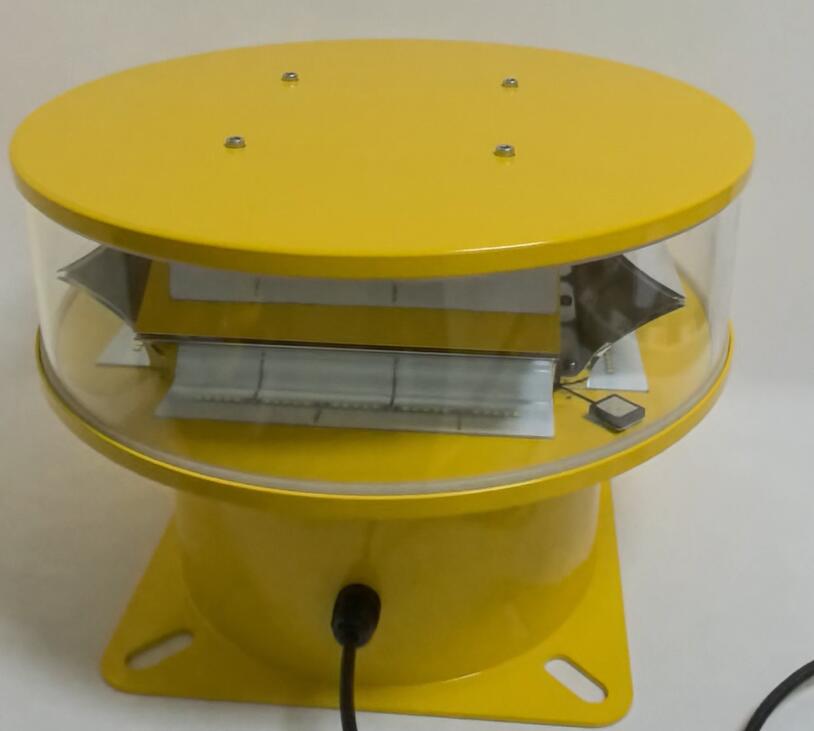Aviation Light Systems: Safeguarding the Skies with Intelligent Illumination
As global air traffic continues to grow, the importance of aviation light systems in ensuring flight safety cannot be overstated. These specialized lighting solutions guide pilots during takeoff, landing, and navigation while preventing collisions with obstacles. From runway edge lights to high-intensity beacons on skyscrapers, aviation light technology plays a crucial role in modern airspace management. This article examines the different types, applications, innovations, and regulatory standards shaping today's aviation light systems.
The Critical Role of Aviation Lights
Aviation light systems serve multiple essential functions:
Runway Guidance: Helps pilots align and navigate during low-visibility conditions.

Obstacle Warning: Marks tall structures to prevent mid-air and ground collisions.
Taxiway Navigation: Ensures safe ground movement for aircraft.
| aviation light |
Regulatory Compliance: Meets international aviation safety standards.
Without these lights, nighttime operations and poor-weather flying would be significantly more hazardous.
Types of Aviation Light Systems
1. Runway Lighting
Runway Edge Lights (White/Amber): Outline runway boundaries.
| aviation lights |
Threshold Lights (Green/Red): Indicate the beginning (green) and end (red) of runways.
Centerline Lights (White): Guide pilots during takeoff and landing.
2. Approach Lighting Systems (ALS)
Assist pilots in aligning with the runway during descent.
Include sequenced flashing lights ("rabbit lights") for enhanced visibility.
3. Obstruction Lighting
Red Aviation Light (steady/flashing): Used on structures under 150m.
White Strobe Lights: For taller obstacles (e.g., skyscrapers, wind turbines).
4. Taxiway Lighting
Blue Edge Lights: Define taxiway paths.
Green Centerline Lights: Guide aircraft to and from runways.
Technological Innovations in Aviation Lighting
1. LED Revolution
Replacing traditional incandescent and halogen lights.
Benefits: Longer lifespan, lower energy consumption, brighter output.
2. Solar-Powered Solutions
Ideal for remote airports with unreliable power grids.
Reduces carbon footprint and operational costs.
3. Smart Lighting Controls
Automated brightness adjustment based on weather conditions.
Remote monitoring for real-time fault detection.
4. Wireless Synchronization
Ensures precise timing for flashing beacons and sequenced approach lights.
Reduces wiring complexity in large installations.
Regulatory Standards Governing Aviation Lights
Global uniformity is maintained through strict regulations:
ICAO Annex 14: Defines international standards for aerodrome lighting.
FAA AC 150/5345: Specifies aviation light requirements in the U.S.
EASA CS-ADR-DSN: European guidelines for obstacle and runway lighting.
Compliance ensures interoperability and safety across different regions.
Emerging Trends in Aviation Lighting
1. Enhanced Vision Systems (EVS) Integration
Combining aviation light systems with infrared and HUD technologies.
2. Drone-Specific Lighting
New standards for UAV traffic management in low-altitude airspace.
3. Sustainable Materials
Recyclable components and energy-efficient designs.
4. AI-Powered Predictive Maintenance
Machine learning algorithms to anticipate lighting failures before they occur.
Aviation light systems remain indispensable in maintaining safe and efficient air travel. With advancements in LED technology, smart controls, and sustainable designs, these systems are evolving to meet the demands of increasing air traffic and urbanization. As regulations adapt to new challenges like drone integration, the future of aviation light solutions will continue to illuminate the path toward safer skies.
